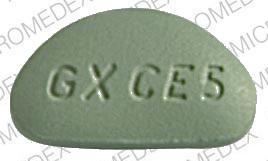Amerge Disease Interactions
There are 4 disease interactions with Amerge (naratriptan).
5-HT1 agonists (applies to Amerge) CAD risk factors
Major Potential Hazard, High plausibility. Applicable conditions: Hyperlipidemia, Smoking, Obesity, Diabetes Mellitus, History (Familial) - Ischemic Heart Disease, Menopausal Disorder
The group of drugs known as 5-hydroxytryptamine1 receptor (5-HT1) agonists can cause vasospastic reactions, including coronary vasospasm, peripheral vascular ischemia, and colonic ischemia. Rarely, serious adverse cardiac events including acute myocardial infarction, arrhythmia, cardiac arrest, and death have been reported within a few hours following the administration of 5-HT1 agonists, in some cases even in patients with no prior history or findings of coronary artery disease (CAD). Significant elevation in blood pressure, including hypertensive crisis, has also been reported on rare occasions in patients with and without a history of hypertension, as have transient increases in blood pressure and peripheral vascular resistance. In general, patients with potentially unrecognized CAD as predicted by the presence of risk factors (e.g., hypertension, hypercholesterolemia, tobacco use, obesity, diabetes, strong family history of CAD, female with surgical or physiological menopause, or male over 40 years of age) should not be administered 5-HT1 agonists unless a cardiovascular evaluation provides satisfactory clinical evidence indicating the lack of CAD, ischemic heart disease, or other significant underlying cardiovascular disease. As a precaution, the manufacturers recommend that the first dose be administered under medical surveillance in such patients, and that electrocardiographic monitoring be considered during the interval immediately following administration to help detect any asymptomatic cardiac ischemia that may occur. Periodic cardiovascular evaluations should be performed during intermittent, long-term use.
5-HT1 agonists (applies to Amerge) cardiovascular disease
Major Potential Hazard, High plausibility. Applicable conditions: History - Myocardial Infarction, Cerebral Vascular Disorder, History - Cerebrovascular Disease, Heart Disease
The use of 5-hydroxytryptamine receptor (5-HT1) agonists is contraindicated in patients with a history or current symptoms or signs of ischemic cardiac, cerebrovascular, and/or peripheral vascular diseases. In addition, these agents should not be used in patients with any other significant underlying cardiovascular disease or uncontrolled hypertension. 5-HT1 agonists can cause vasospastic reactions, including coronary vasospasm, peripheral vascular ischemia, and colonic ischemia. Some serious adverse cardiac events including acute myocardial infarction, arrhythmia, cardiac arrest, and death have been reported within a few hours following the administration of 5-HT1 agonists, in some cases even in patients with no prior history or findings of coronary artery disease (CAD). Significant elevation in blood pressure, including hypertensive crisis, has also been reported on rare occasions in patients with and without a history of hypertension, as have transient increases in blood pressure and peripheral vascular resistance. Cerebrovascular events have included cerebral hemorrhage, subarachnoid hemorrhage, and stroke, some resulting in fatalities. However, the relationship to 5-HT1 agonists is uncertain and, in a number of cases, the cerebrovascular events may have been primary where symptoms were mistaken to be migraine.
Naratriptan (applies to Amerge) liver disease
Major Potential Hazard, High plausibility.
The manufacturer considers the use of naratriptan to be contraindicated in patients with severe hepatic impairment (Child-Pugh grade C). Naratriptan is partially metabolized by the liver. In patients with moderate hepatic impairment (Child-Pugh grade A or B), the clearance of naratriptan has been shown to decrease by 30% compared to healthy controls, resulting in an approximately 40% increase in the mean half-life. A lower initial dosage should be considered in patients with mild or moderate hepatic impairment, and the maximum dosage should not exceed 2.5 mg per 24-hour period. There are no data concerning the use of naratriptan in patients with severe hepatic impairment, thus it is not recommended.
Naratriptan (applies to Amerge) renal dysfunction
Major Potential Hazard, High plausibility.
The manufacturer considers the use of naratriptan to be contraindicated in patients with severe renal impairment (CrCl < 15 mL/min). Naratriptan is primarily eliminated by the kidney, approximately 50% as parent drug and 30% as metabolites. In patients with moderate renal impairment (CrCl = 18 to 39 mL/min), the clearance of naratriptan has been shown to decrease by 50% compared to healthy controls, resulting in an approximately 83% increase in the mean half-life. A lower initial dosage should be considered in patients with mild or moderate renal impairment, and the maximum dosage should not exceed 2.5 mg per 24-hour period. There are no data concerning the use of naratriptan in patients with severe renal impairment, thus it is not recommended.
Amerge drug interactions
There are 102 drug interactions with Amerge (naratriptan).
Amerge alcohol/food interactions
There are 2 alcohol/food interactions with Amerge (naratriptan).
More about Amerge (naratriptan)
- Amerge consumer information
- Check interactions
- Compare alternatives
- Reviews (29)
- Drug images
- Side effects
- Dosage information
- During pregnancy
- Drug class: antimigraine agents
- Breastfeeding
Related treatment guides
Drug Interaction Classification
| Highly clinically significant. Avoid combinations; the risk of the interaction outweighs the benefit. | |
| Moderately clinically significant. Usually avoid combinations; use it only under special circumstances. | |
| Minimally clinically significant. Minimize risk; assess risk and consider an alternative drug, take steps to circumvent the interaction risk and/or institute a monitoring plan. | |
| No interaction information available. |
Further information
Always consult your healthcare provider to ensure the information displayed on this page applies to your personal circumstances.


